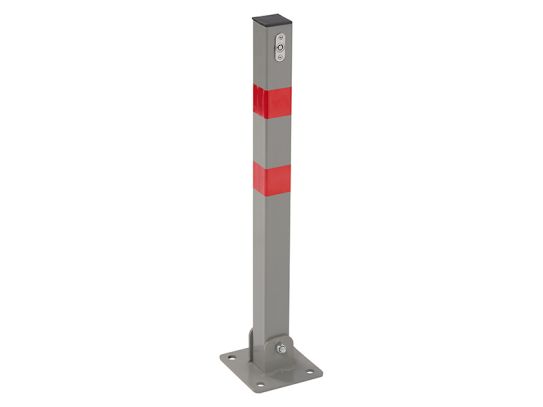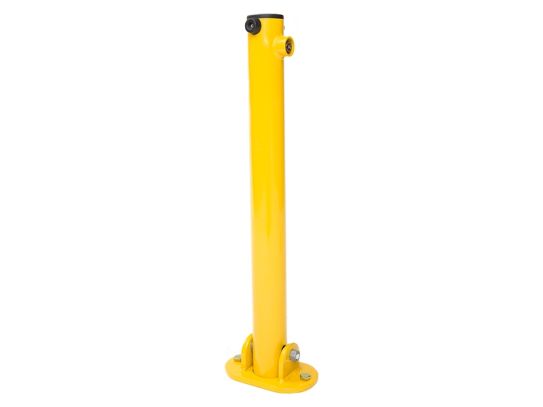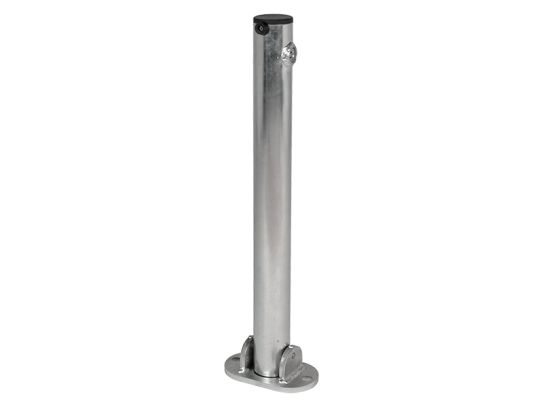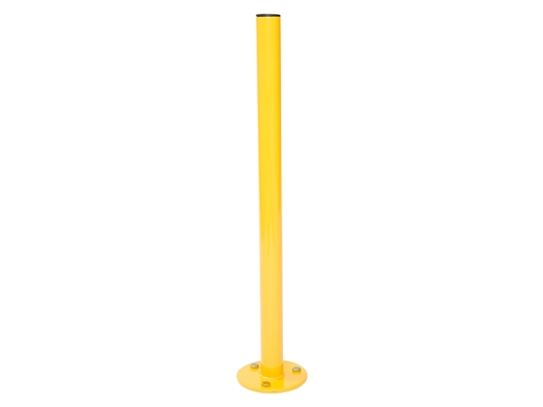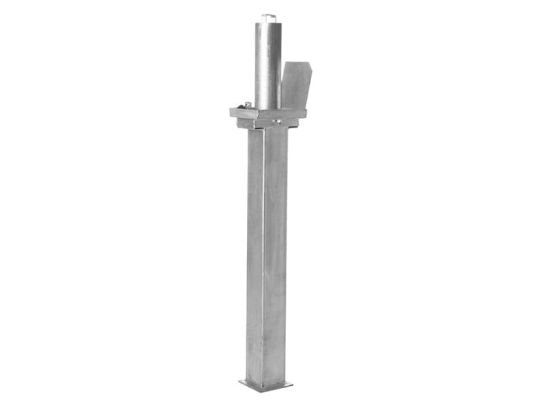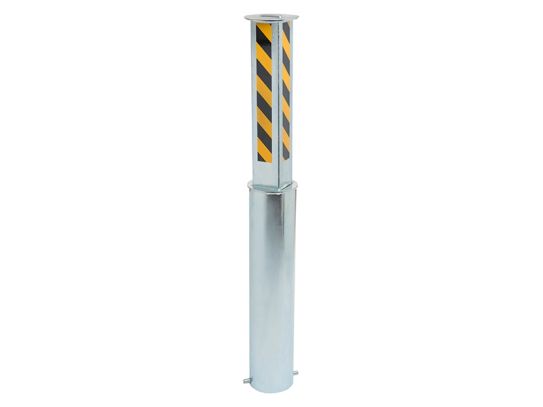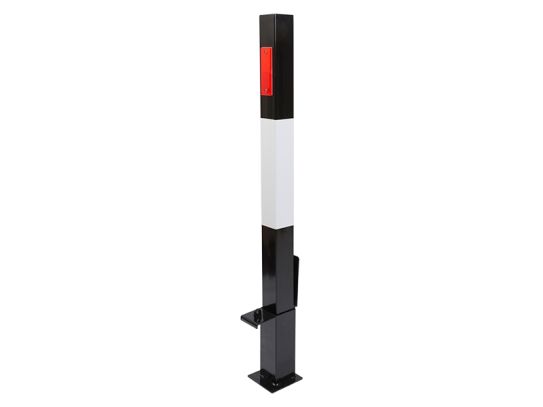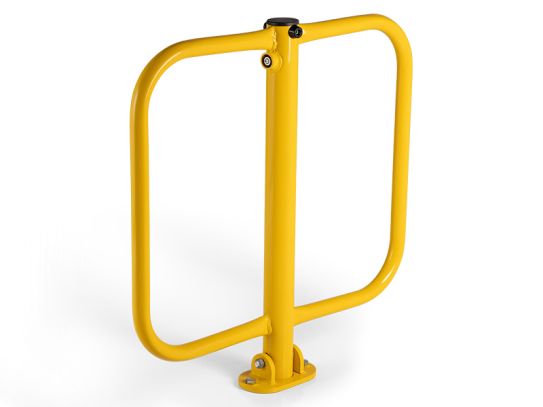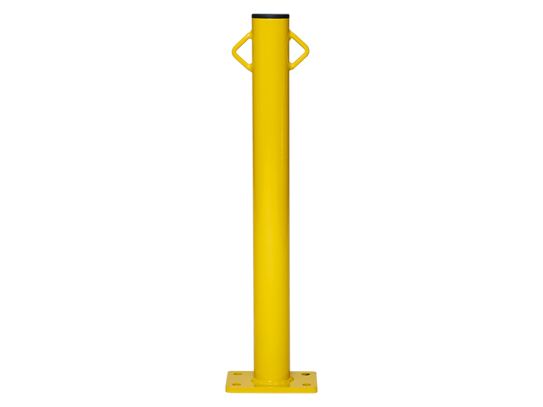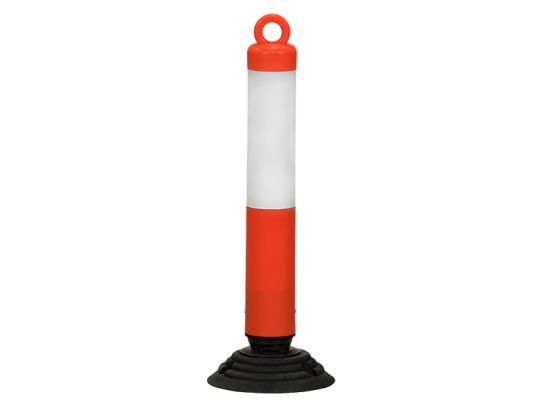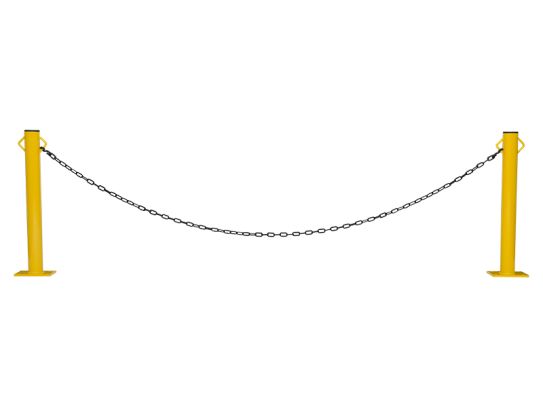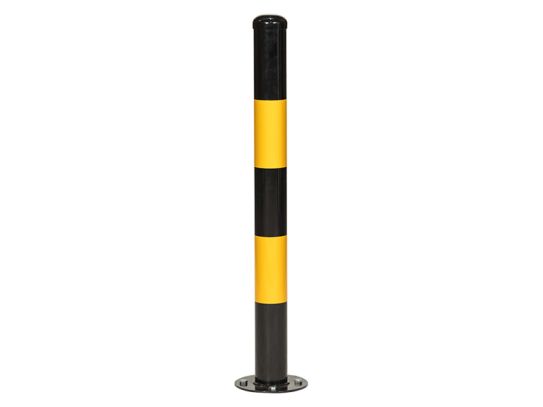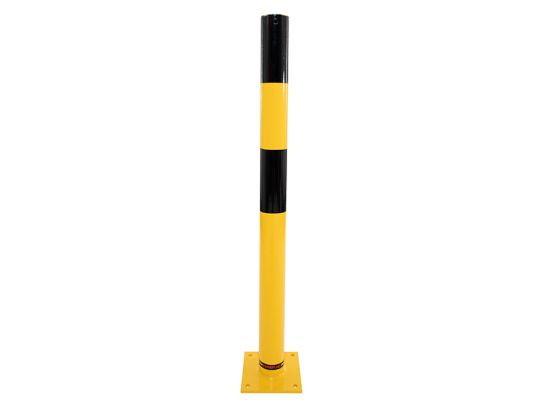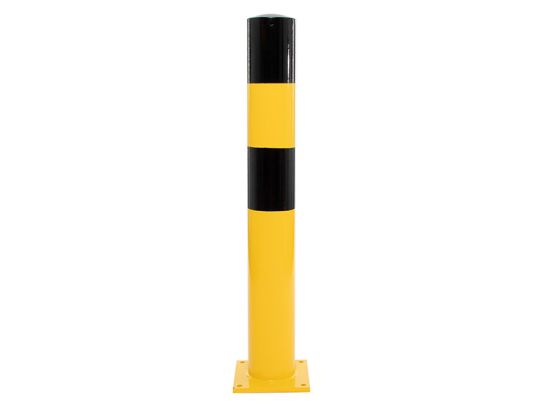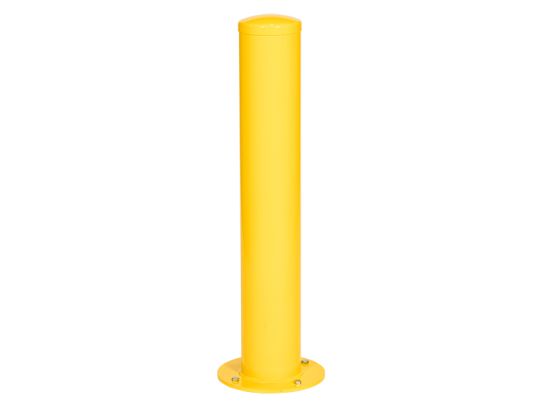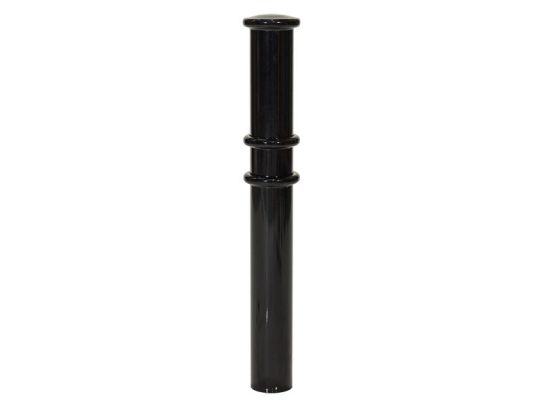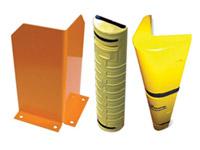Parking Posts & Bollards
Protect your property with our durable parking posts and bollards. Perfect for securing your parking areas and restricting access to unauthorised vehicles. Choose from a variety of colours and styles to match your property's aesthetic.
Durable and Cost-effective Solutions for Parking Management
Looking for a simple and effective way to manage vehicle access and maintain order in your parking area? Then look no further than our parking posts and bollards! These durable products are designed to withstand daily use, and can be easily installed in a variety of settings.
Perfect for residential areas with limited parking, or commercial areas where specific spaces need to be reserved, parking posts and bollards are a cost-effective solution that will help you control vehicle access and ensure the safe and orderly flow of traffic. Don't miss out on this opportunity to improve the efficiency and safety of your parking area - invest in parking posts and bollards today!
What Are Parking Posts & Bollards?
Parking posts, also known as bollards, are posts or poles that are used to control and regulate the flow of traffic in parking lots or other areas. They are typically made of metal or concrete and can be either fixed or removable. Parking posts are often used to block off areas of a parking lot to prevent unauthorised vehicles from entering, or to create a physical barrier between pedestrians and moving vehicles.
Some parking posts can also be used to provide security for a particular area, such as around a building or in a parking garage. In general, parking posts are an effective and convenient way to manage the flow of traffic in a parking lot and ensure the safety of both pedestrians and vehicles.
What Are the Benefits of Parking Posts & Bollards?
There are several benefits to using parking posts and bollards to control vehicle access and prevent unauthorised parking. Some of the main benefits include:
- Improved traffic flow: By preventing unauthorised vehicles from parking in certain areas, parking posts and bollards can help improve traffic flow and reduce congestion in busy areas.
- Enhanced security: Bollards can be used to protect buildings and pedestrian areas from vehicles, making them an effective deterrent against terrorist attacks and other forms of vehicle-based violence.
- Increased safety: Parking posts and bollards can also help to protect pedestrians and cyclists by preventing vehicles from encroaching on sidewalks and bike lanes.
- Better utilisation of space: By restricting access to designated parking spaces, parking posts and bollards can help ensure that these spaces are used efficiently and fairly, reducing the need for additional parking infrastructure.
- Reduced costs: By preventing unauthorised parking, parking posts and bollards can help to reduce the costs associated with managing parking facilities, such as the cost of issuing tickets to violators.
How Do Parking Posts & Bollards Work?
Parking posts and bollards work by providing a physical barrier that vehicles and pedestrians cannot pass through. This barrier can be used to block off certain areas of a parking lot to prevent unauthorised vehicles from entering, or to create a separation between pedestrians and moving vehicles. Some parking posts and bollards are fixed in place, while others can be easily removed when necessary.
Fixed parking posts and bollards are typically made of metal or concrete and are anchored securely to the ground. Removable parking posts and bollards are often made of a lighter material, such as plastic or rubber, and can be easily moved when needed. In general, parking posts and bollards are an effective and convenient way to regulate the flow of traffic and enhance safety in a parking lot or other area.
What Are the Different Types of Parking Posts & Bollards?
There are several different types of parking posts and bollards that are used for different purposes and in different settings. Some common types of parking posts and bollards include:
- Removable parking posts: Removable parking posts, also known as "lift-out" parking posts, are designed to be easily installed and removed as needed. These posts are typically made of metal or plastic and are either lifted out of the ground by hand or are operated using a key or other mechanism. Removable parking posts are often used in areas where parking is limited or restricted, such as in residential areas or at businesses.
- Retractable parking posts: Retractable parking posts are similar to removable parking posts, but they are designed to be raised or lowered into the ground using a mechanical mechanism. Retractable parking posts are often operated using a key or other device, and they are typically made of metal or plastic. These posts are commonly used in parking garages or other areas where space is limited.
- Fixed parking posts: Fixed parking posts, also known as "bolted-down" parking posts, are permanently installed in the ground and cannot be removed or adjusted. These posts are typically made of metal or concrete and are often used in areas where parking is restricted or controlled, such as at businesses or in residential areas.
- Surface-mounted parking posts: Surface-mounted parking posts are installed on the surface of the ground and are not embedded in the ground like other types of parking posts. These posts are typically made of metal or plastic and are bolted or otherwise attached to the ground using anchors or other devices. Surface-mounted parking posts are commonly used in areas where there is limited space or where other types of posts cannot be installed.
- Rigid bollards: Rigid bollards are short, sturdy posts that are made of materials such as steel, concrete, or plastic. They are designed to be permanently installed in the ground and are not intended to be moved or adjusted. Rigid bollards are commonly used to protect buildings, sidewalks, or other areas from vehicle collisions.
- Removable bollards: Removable bollards are similar to rigid bollards, but they are designed to be easily installed and removed as needed. These bollards are often made of metal or plastic and are either lifted out of the ground by hand or are operated using a key or other mechanism. Removable bollards are commonly used in areas where access needs to be restricted or controlled on a temporary basis.
- Retractable bollards: Retractable bollards are similar to removable bollards, but they are designed to be raised or lowered into the ground using a mechanical mechanism. Retractable bollards are often operated using a key or other device, and they are typically made of metal or plastic. These bollards are commonly used in areas where access needs to be restricted or controlled on a regular basis.
What Safety Considerations Should Be Taken into Account When Using Parking Posts & Bollards?
There are several safety concerns to consider when using parking posts and bollards. Because these devices are designed to control access to certain areas and restrict the movement of vehicles or pedestrians, it's important to ensure that they are installed and used properly to avoid potential safety hazards. Some safety concerns to consider when using parking posts and bollards include:
- Proper installation: Parking posts and bollards should be installed by qualified professionals in accordance with local building codes and safety standards. Improper installation can lead to stability issues or other hazards.
- Visibility: Parking posts and bollards should be clearly visible to drivers and pedestrians to avoid accidents or collisions. They should be painted in bright colours or have reflective strips to improve visibility, especially at night or in low light conditions.
- Maintenance: Parking posts and bollards should be regularly inspected and maintained to ensure that they are in good working condition. Any damaged or malfunctioning posts or bollards should be repaired or replaced as soon as possible to avoid potential safety hazards.
- Use in emergency situations: Parking posts and bollards should not be used to block access to fire exits, emergency vehicles, or other areas that may be needed in an emergency situation.
How Do You Maintain and Clean Parking Posts & Bollards?
To maintain parking posts and bollards, you should regularly inspect them for any signs of damage or wear and take appropriate action as needed. Some specific steps you can take to maintain parking posts and bollards include:
- Check for visible damage: Inspect parking posts and bollards regularly for any signs of damage, such as dents, scratches, or other signs of wear. If you notice any damage, it's important to repair or replace the damaged posts or bollards as soon as possible to avoid potential safety hazards.
- Check for stability: Make sure that parking posts and bollards are securely installed and are not loose or unstable. If a post or bollard is wobbly or seems unstable, it should be repaired or replaced as soon as possible.
- Check for proper operation: If you have removable parking posts or bollards, make sure that they are operating properly. If a post or bollard is not raising or lowering properly, it may need to be repaired or adjusted.
- Clean and maintain: Regularly clean parking posts and bollards to remove dirt, debris, or other contaminants that could affect their performance. Use a mild detergent or cleaning solution and a soft cloth to clean the posts or bollards, and avoid using abrasive cleaners or tools that could damage the surface.
Are There Any UK or European Industry Standards or Regulations That Apply to Parking Posts & Bollards?
Yes, there are several industry standards that apply to the design, installation, and use of parking posts and bollards in the European Union (EU) and the United Kingdom (UK). These standards are designed to ensure the safety and effectiveness of parking posts and bollards, and they specify the minimum requirements for their design, performance, and testing.
- EN 1176: This is the European standard for the design and construction of playground equipment. It applies to a wide range of playground equipment, including bollards and other barriers that are used to protect children from vehicle collisions.
- EN 1463-1: This is the European standard for the testing and performance of passive security barriers. It applies to a wide range of barriers, including parking posts and bollards, and specifies the minimum requirements for their design, performance, and testing.
- BS EN 1563: This is the British standard for the design, manufacture, and installation of metal bollards. It specifies the minimum requirements for the design, performance, and testing of metal bollards, including their strength, stability, and resistance to impacts.
- BS EN 1610: This is the British standard for the installation of structural anchors. It applies to the installation of anchors for removable or retractable parking posts and bollards, and specifies the minimum requirements for their design, performance, and testing.
These are just a few examples of the industry standards that apply to parking posts and bollards in the EU and the UK. There may be other standards that apply depending on the specific type of post or bollard and its intended use. It's important to check with the manufacturer or supplier to ensure that the posts or bollards you are using comply with the applicable standards.
